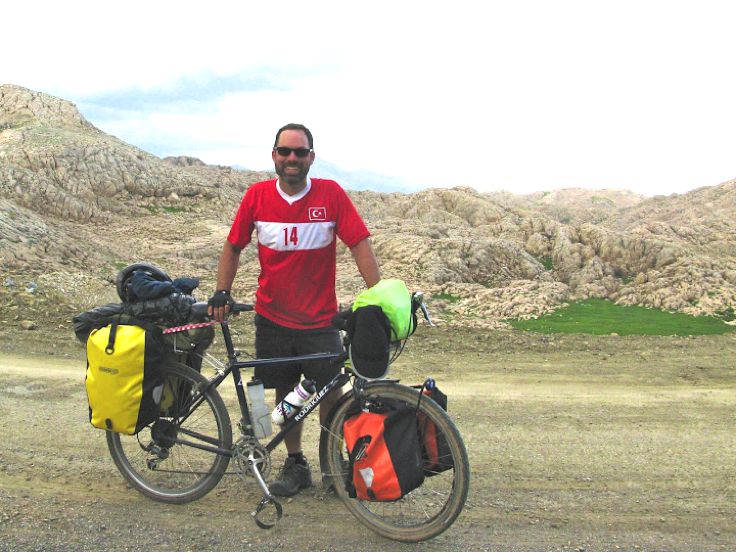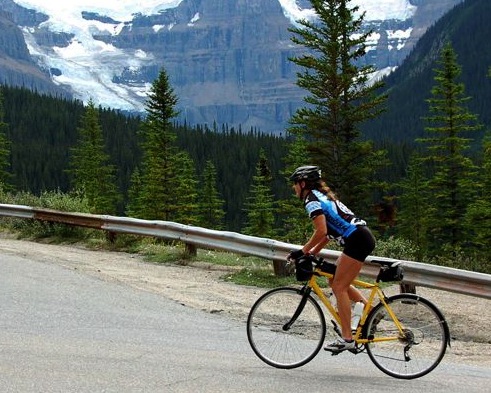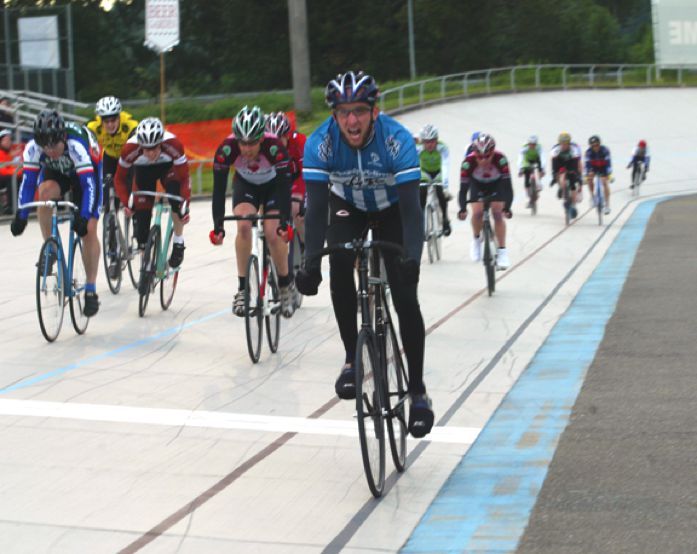
Rodriguez Bicycle Geometries
Our bicycle geometries are designed around the intended use of the bike. Sizing information is the same for any geometry that we make. So, if you're looking for sizing specifications Click Here.If you're looking for differences in geometry between the models we make, your in the right place.
Touring Bikes
Models - Adventure, UTB, Makeshift Tour, Phinney Ridge
 Aside from just having more braze-on fittings for things like racks, a touring bike design has to take into account the fact that the rider will probably run really wide tires and fenders. For this reason, touring bikes have to have longer wheel bases than sport or competition bikes. There are a few design features that lead to this.
Aside from just having more braze-on fittings for things like racks, a touring bike design has to take into account the fact that the rider will probably run really wide tires and fenders. For this reason, touring bikes have to have longer wheel bases than sport or competition bikes. There are a few design features that lead to this.
Longer Chain stays: You just can't jam wide tires into a bike with short chain stays. Longer chain stays provide the needed room in the frame for bigger wider tires and full fenders. They are also nice for touring as the rider has more heal clearance when riding with loaded panniers.
Slacker head angle and more fork rake: Touring bicycle designs require that the front wheel to be positioned further forward from the rider. On a Rodriguez design, this is achieved not by lengthening the top tube, which would affect the fit of the bike, but by changing the head tube angle and fork rake. If the head angle and fork rake are properly balanced, the steering of the bike won't be affected.
By achieving the proper balance, we can provide more clearance for the riders toes when choosing to run wide tires and/or fenders and give them the right fit.
The longer wheel base will make the touring bike handle a little slower than a sport or race bike, but that's a desirable characteristic for touring anyway...right?
Uses: Loaded or Light Touring, Commuting, any other use that calls for really wide tires on a road bike
Sport Road Bikes
Models - Rainier, Makeshift Sport
 This is a design that's very similar to race bike geometries of the late 1970's through the 1980's. Our sport models are by far our most popular models. The wheel base will be between our Competition and Touring models. The chain stays are long enough to accomodate tires up to 32c wide (28c with a full fender). The brakes and forks used on these models are specially designed to accomodate these tire sizes and fenders as well. The head angles and fork rakes are right on par with the race bikes of the 1980's.
This is a design that's very similar to race bike geometries of the late 1970's through the 1980's. Our sport models are by far our most popular models. The wheel base will be between our Competition and Touring models. The chain stays are long enough to accomodate tires up to 32c wide (28c with a full fender). The brakes and forks used on these models are specially designed to accomodate these tire sizes and fenders as well. The head angles and fork rakes are right on par with the race bikes of the 1980's.
These models will ride very similar to the classic bikes that most people knew and loved in the late 70's and 80's, but are set up with modern day advancements in materials and components.
Uses: Light Touring, Commuting, Weekend Warrior, Racing, any use that calls for a light road bike that can run wider tires
Racing/Competition Bikes
Models - Outlaw, Competition - all versions
 Rodriguez Competition designs are similar to the racing bikes of the 1990's. In today's world, our Competition bikes would be considered an Endurance geometry. A lot of manufacturers' competition geometry is the same geometry that you would find in pro racing. We choose do build a tight, quick bicycle that's very light, but with a bit more comfort built it.
Rodriguez Competition designs are similar to the racing bikes of the 1990's. In today's world, our Competition bikes would be considered an Endurance geometry. A lot of manufacturers' competition geometry is the same geometry that you would find in pro racing. We choose do build a tight, quick bicycle that's very light, but with a bit more comfort built it.
Think of this way. What if you were to buy a Ferrari to drive everyday. Would you want the exact same Ferrari model that is driven in Formula One races? Or, would want the Ferrari that has doors that open, an air conditioner, a stereo, cruise control, etc... Sure, you want the high performance, quick handling, and raw power of the Ferrari, but let's face it, you still want some creature comforts....right? That's where we come in.
A Rodriguez Competition geometry is like that sweet Ferrari with the comforts that we all desire. The truth is, none of us are getting younger.
Uses - Racing, Sport riding, any quick riding where wide tires and fenders are not required
Low Trail Designs
Available in custom
We can make any of our bicycles into a low trail design if desired. Low trail designs have become an interest of many in recent years. Randonneur (or Rando) riding has a pretty big following, so people are reading about low trail designs on forums that focus on that type of riding. Some people think that they need a low trail bike for this type of riding. This is only true if you are going to run a lot of weight in a bag mounted high on the front of the bike.
As a rider gets more into 'Rando' they find that the look of the bicycle is part of the fun. Rando riders like bikes that look like late 1960's or early 1970's bikes. Level top tubes, short seat posts, and most of all they like large leather or canvas bags mounted up high on the front of the bike. Most, or all of the riders stuff is kept in that bag. If the bag weighs 10 ~ 20lbs. loaded, as they often do, then quicker steering is helpful for handling as the weight affects the steering significantly.
Realize though, that when the weight is not in the front bag, the handling is a lot quicker than what most of us want for a daily rider. So, it's important to consider what the use of your bike will be most of the time. Our customers that ride low trail bikes in the Rando circuit have multiple bikes, and use the low trail bike only when they are riding with the weight up front and high.
A lot of our Rando riders don't actually run a heavy bag on the front bars, so they ride a standard trail model like our Rainier.

